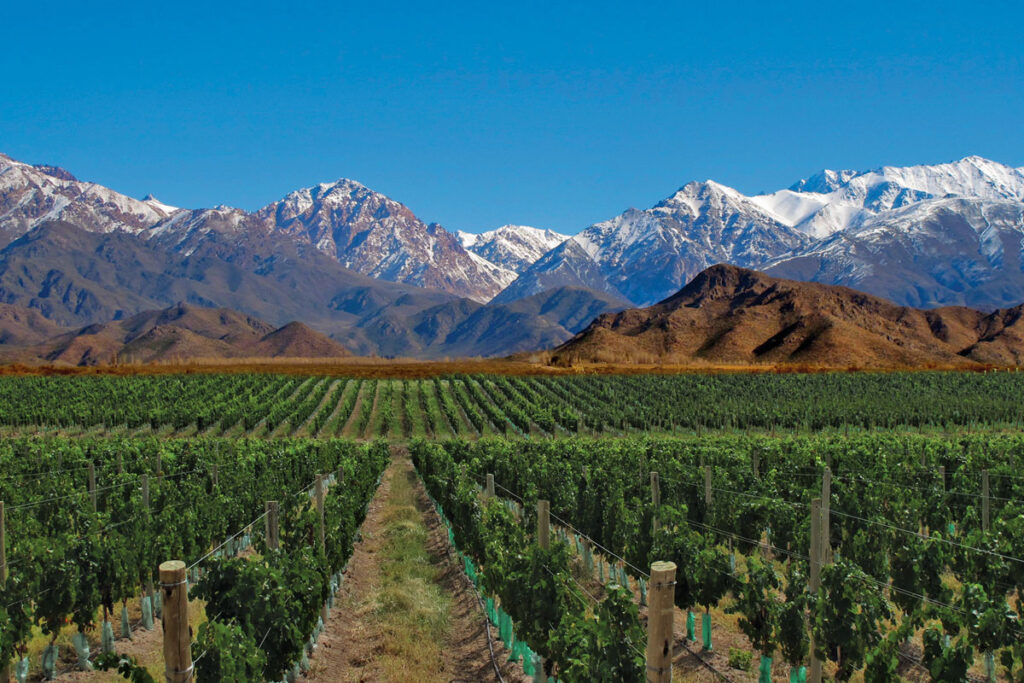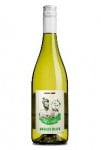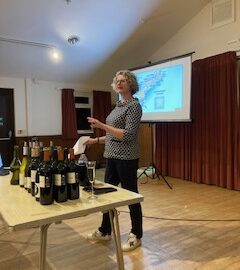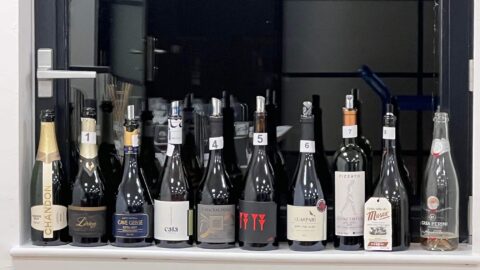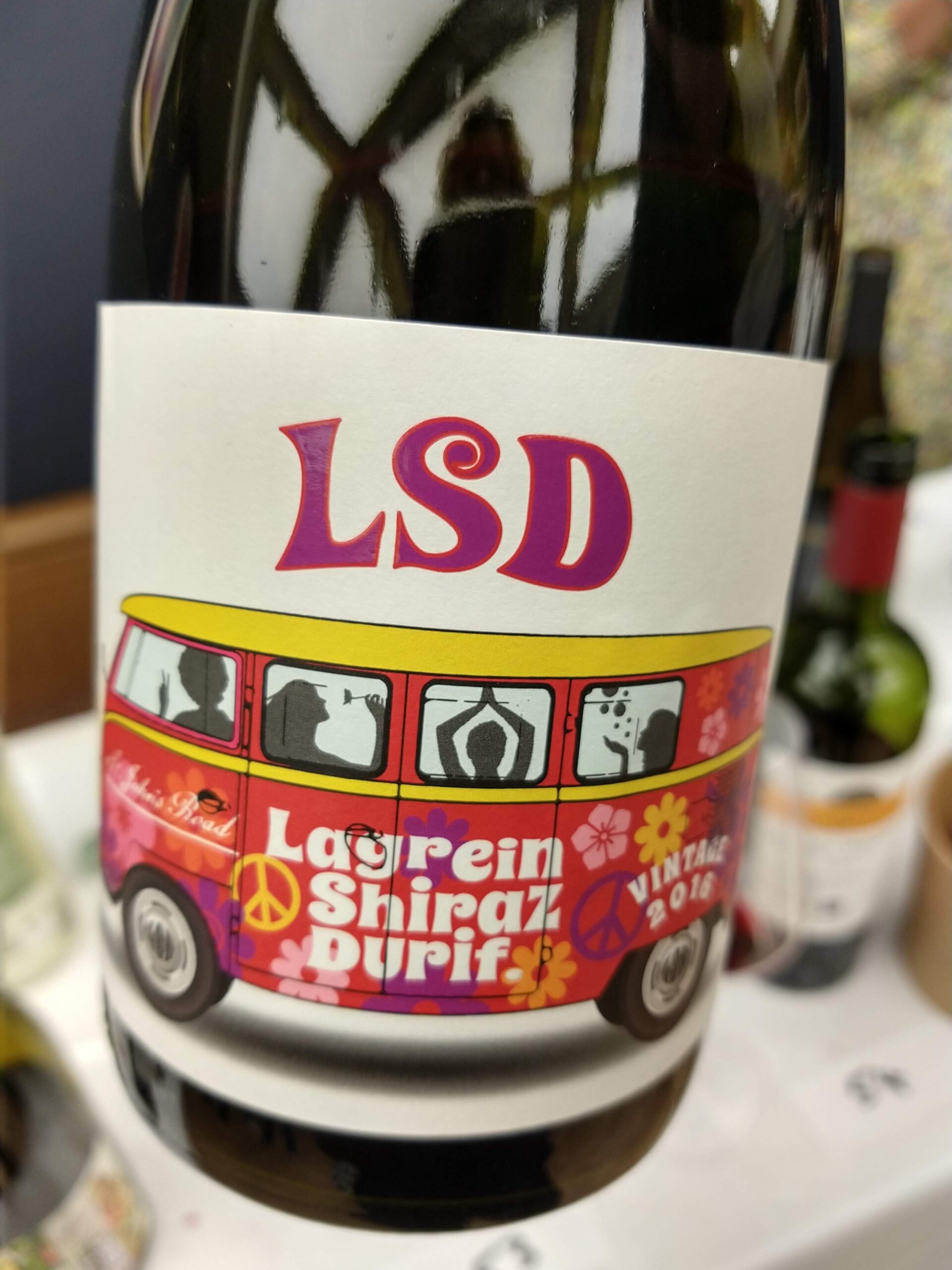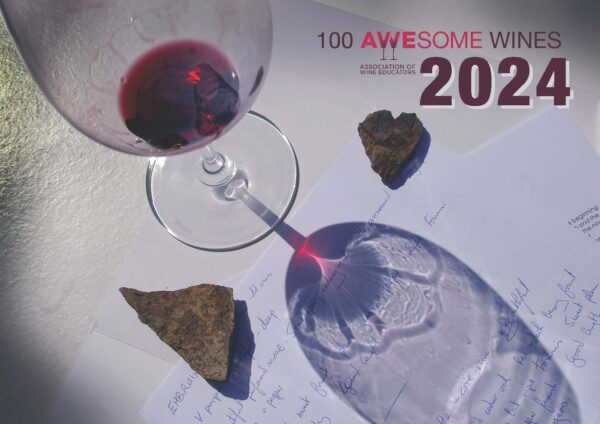Argentina is famed for its bold and fruity reds, and rightly so. With its sunny summers and the snow-capped Andes mountains providing not just a stunning backdrop, but also natural irrigation, Argentina has become one of the most dynamic winemaking countries.
Today, Argentina produces some of the best New World’s ‘oldest world’ styles. The wines feature well known international grape varieties which thrive in the intense sunlight and the well irrigated soils, delivering those ripe fruit characters that are immediately attractive. The country has a rich wine history, producing a seemingly endless array of different wines such as Syrah, Tempranillo, Cabernet Sauvignon and perhaps the most famous – the iconic Malbec. This grape was a blending variety in Bordeaux but because of its poor resistance to weather and pests, it never surfaced as a top French variety. Instead, it found a new home in Mendoza, Argentina, where a nostalgic French botanist planted it in 1868. In the 1990’s Argentina’s winemakers focused on quality over quantity, so today we can enjoy elegant Pinot Noirs, superb ‘Bordeaux blend’ wines, and fragrant whites from Argentina’s own indigenous grape, Torrontés.
Due to the high altitude and low humidity in the wine producing regions, Argentine vineyards rarely face the problems of insects, fungi, moulds and other diseases that affect vineyards in other countries. This allows cultivating with little or no pesticides, enabling organic wines to be easily produced.
Pulenta Estate
Among the many outstanding wine producers, Pulenta Estate has always piqued my curiosity. Now in its third generation, Eduardo and Hugo revived the original winery and today continue the work of its founder, Italian Angelo Pulenta, who arrived in Mendoza at the turn of the 1900’s. Located in Alto Agrelo in the Mendoza region, the winery reflects a heritage of tradition that lives on, combining experience and highly qualified labour.
Mendoza is only a short flight from Santiago just over the border in Chile, but the Andes mountains make a huge difference to the wines. Here, growing conditions are harsher and the altitude considerably higher, resulting in a more robust, structured, savoury style.
Their 135 hectares of quality vineyards enjoy perfect climatic conditions at an altitude of almost 1000m, with the melting ice from the Andes providing a natural irrigation system.
La Flor Malbec Pulenta Estate is an incredible ‘everyday’ drinking Malbec. Heaps of juicy berries hit your nose and palate, yet the gentle tannins make it an easy drinking, almost soft red, that hits the spot every time. The grapes are hand harvested from vines with an average age of 20 years. These then undergo a ‘pre-fermentation cold maceration’, a wine making process that involves cooling down freshly harvested grapes in the form of must, to extract aroma and flavour compounds and improve the overall quality of the wine produced. After the fermentation, the wine is aged for six months in French oak barrels to round off and soften. The aim of the whole process is to make an accessible and early drinking style of wine, despite its 14.5% abv, and without losing the typical Malbec definition. Just one of the many innovations you will find in Argentina’s wine making.
Perhaps the jewel in the Pulenta crown is its Grand Corte VII Pulenta Estate, the Argentinian take on the classic Bordeaux Blend. This is a serious red, full-bodied with fine tannins and plenty of ripe fruit, finished by complex notes of herbs, tobacco and even chocolate. The complexity, balance and superb finish is down to the skilful blend of grapes, with Malbec being the dominant one, but also with Cabernet Sauvignon, Merlot, and small percentages of Petit Verdot and Tannat.
Some of the vineyards are situated at altitudes of between 1000 and 1500 meters, which temper the Mendoza heat and imparts that refined taste and balance Gran Corte VII displays at every sip. Mendoza deserves its reputation as a pioneering force in sustainable viticulture – in just one region, they have 11% of all organic vineyards in the world.
As well as their superb Malbecs, Pulenta produces a whole range of wines, from fresh whites to fruity rosés and deep reds. One that needs a special mention is Pulenta Estate IX Pinot Noir. From the Viñedos Don Antonio vineyard in Mendoza, the vines are planted on deep sandy soils, which provide excellent drainage. Like all others in the Pulenta Estate, this vineyard too, is organic. Burgundy, in the ‘old world’ of France, is the spiritual home of Pinot Noir, producing cherry-scented wines with a silky texture, herbal notes and forest fruit aromas. In the ‘new world’ Pinot Noir thrives in cooler areas, and Argentina, which offers vineyard altitude, is perfect for growing this sensitive, thin-skinned grape. Here, Pinot Noir has a more velvety palate, riper fruit flavours and less herbal aromas. This gorgeous Pulenta Estate IX Pinot Noir, aged for nine months in French oak, displays aromas of bright red cherries, raspberries and strawberries, and just a hint of a toasty note. It’s fresh on the palate even at 14.5% abv, with a very pleasant tannic note. It’s also suitable for vegetarians and vegans.
Amalaya
There are two other Malbecs which should be on your bucket list. The first is Amalaya Calchaqui Valley Malbec. The vineyards are located in the very heart of the Calchaqui Valley, another extraordinary region in Argentina, known for being one of the highest wine regions in the world. The climate here is very dry, with an average of just 150mm of rain in a year and huge climate fluctuations between day and night. The soils are rocky, poor and sandy, forcing the roots to dig deep for nutrients and water. Such austere conditions are good for the vine, as they produce fruit with an extraordinary concentration of flavour. Sad for the vine, lucky for us!
I have always loved the story behind the name. Amalaya means ‘hope for a miracle’ in the indigenous language of the now extinct Calchaqui tribe, which gave the name to the region. At nearly 1900m above sea level, you do need to hope for a miracle if you want to grow vines! And the miracle happens every year. The wines are fruit driven in style, with a graceful finesse. They also represent incredible value for their quality and they truly reflect what Argentinian winemaking is all about.
I love this Malbec, with its deep ruby red colour and a purple hue. With just a touch of Tannat and Petit Verdot in the blend, the fruit here is truly intense, pronounced aromas of raspberries and cherries, floral notes, and a touch of spice. The wine is well structured, fresh and fruity, with soft, rounded tannins and a long velvety finish. Only 25% of the wine is aged in old French oak barrels for eight months before bottling, so as not to overpower the freshness of the fruit.
Kaiken
The second is Kaiken Clasico, a 100% Malbec also from Mendoza. Kaikenes are native Patagonian wild geese that fly across the Andes between Chile and Argentina. In the same way, the Chilean winery Montes which is behind this wine, crossed the Andes to set up in Mendoza. Right in the heart of Mendoza and also further to the south in the Valle de Uco, their vineyards thrive and produce excellent fruit. The Malbec for this wine comes from vineyards in the Agrelo area, just 60km from the city of Mendoza at an altitude of 950m above sea level. The clay and sand soil, on a base of stones derived from erosion form the Andes, combines with the warmer climate to produce grapes with fresh fruit aromas and ripe, soft tannins.
Kaiken Clásico is smooth and full-bodied. Deep purple in colour, it displays aromas of red fruits such as plums and blackberries, with spicy notes and tobacco. Its finely balanced palate is fresh, and the tannins are soft. It has aged for six months in both old and new oak for a perfect finish.
If you love Malbec, Argentina is your ultimate wine region – it’s home to the largest Malbec vineyard area in the world. Dive into Argentina and discover its wines, Malbec, and beyond.
Tags: #argentina #argentineanwines #malbec
